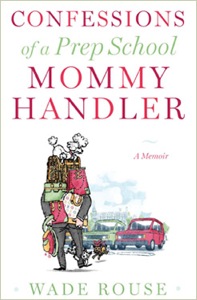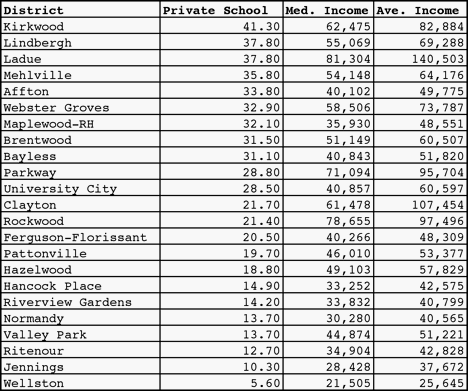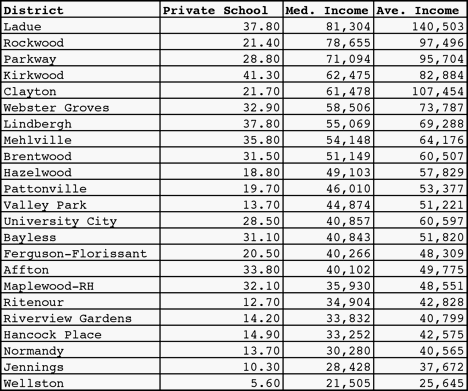Get them into the classroom

The boys at St. Louis University High School do a three week-long community service project their senior year. One of the options is to work in various local elementary schools. They are there all day, in the same classroom, for three weeks, not observing but helping. The boys are to keep a daily journal, complete a written report and follow-up with a discussion with their faculty advisor. By the way, the kids love the them.
While few of these young men will probably go into teaching, especially elementary, they probably will have more classroom experience than most elementary education majors before their student teaching semester. I believe that education majors need to get in the classroom much earlier in their degree programs and not just to observe. An intensive intersession during the first year of schooling would help education students know if they really want to teach before their final semester and provide some context for their theoretical studies. While the SLUH program is for community service, it showed me a glimpse of what our teacher ed programs should be doing.
Do we read or not?
Now we're ranked the sixth most literate city, especially because of our great library resources.
❝St. Louis measured high in library resources — second only to Columbus, Ohio — which remained "outstanding," McLaughlin said.❞
A few days ago I posted that St. Louis was ranked the 9th best place to educate our kids by Forbes. Ironically, our lowest score was for our library system. C+ Sigh, I think I have a headache.
One difference between the two is that the Central Connecticut State University library study just looked at St. Louis city; whereas, the Forbes report looked at the entire metropolitan area.
The CCSU study looked at:
1. Number of school media personnel per 1,000 public school student
2. Number of branch libraries per 10,000 library service population
3. Volumes held in the library per capita of library service population
4. Number of circulations per capita of library service population
5. Number of library professional staff per 10,000 library service population
I couldn't find the specific methodology for the places ranked (Forbes) study, but it discussed number of volumes and turnover. It looks like the CCSU study looks at a wider variety of factors by adding in accessibility and number of librarians. Whether it is the accessibility or narrowing the scope to the city that made the library system higher ranked would be interesting to know.
This is another example of seemingly conflicting assessments that could confuse the public. However, I guess most people who actually read the articles just remember the rankings and leave it at that. Maybe I'm the only one who gets confused.
But hey, we're No. 6!
Getting "Slammed" by student teaching

The other day I was talking to a friend who is in college in a teacher ed program. He made the comment that you study all this pointless theory and then you get slammed when you student teach. I happen to disagree that the theory is pointless, but I definitely agree that you get "slammed" when you student teach and believe that the theory would be more meaningful after you have started some teaching.
I talked to other friends who teach and supervise student teachers in hopes of learning that the teacher ed world has made great strides since I was more directly in the field. Nope.
In that spirit I plan on making several posts presenting my ideas on teacher ed. I have yet to read up on what others are saying but will do so and, of course, comment. These first posts, however, are some ideas I've had based on my own experiences and/or observations.
We're a great place to educate our kids, so sayeth Forbes

Unlike CQ Press's crime statistics, Forbes seems to realize that St. Louis is more than just the city. In ranking the St. Louis area #9 for best places for education, David Savageau has looked at the entire metropolitan area.
Grades
Public School Support A
Private School Options A+
Library Popularity C+
College Town B+
College Options A+
I find the lower grade for library popularity intriguing as I've always heard St. Louis had a strong library system. I'll have to look into this further. Where are the weak links? I don't have time this Christmas vacation to do much digging as I am busy catching up with my reading and paying those library fines.
It's Report Card time!
I am sure I will be mining these report cards for data for some time, but for today's sneak preview I thought I would provide a chart listing the St. Louis county districts by median income and then whether or not they met the criteria for this "award." It's quite telling I think.

Life is all about ME, baby!

Eduwonkette tagged me. As a new blogger, this is both appreciated (thanks!) and stressful. I'm supposed to write seven things about me people don't know. Since I haven't been blogging very long and like to chat, that's easy.
1. I am a Nancy Drew aficionado.
2. I am trying to green my life—at least in baby steps. (I try to shop at Boutique Chartreuse)
3. I am always behind in grading papers.
4. I am a big Cardinals fan and am grieving over the trade of Jimmy (end of an era!)
5. I listen to talk radio (NPR and KMOX)
6. I collect Christmas music (Big Bad Voodoo Daddy is on my list!)
7. Like PREA Prez, the most famous person I've met was Muhammad Ali. I rode with him in an elevator at a convention.
Between being the new girl in town and late to the party, I'm begging off tagging others this time (per NYC Educator). I must admit to enjoying clicking through to sites I don't usually read. Fun!
Zebra fish? It may have worked for her, but my daughter has something else in mind for the science fair
Science Fair time is coming up, so we have every intention of working hard over the winter break on those projects. Sigh.
❝Girls won top honors for the first time in the Siemens Competition in Math, Science and Technology, one of the nation’s most coveted student science awards❞
The NY Times highlights how well girls did this year at the Siemens.
❝Isha Himani Jain, 16, a senior at Freedom High School in Bethlehem, Pa., placed first in the individual category for her studies of bone growth in zebra fish, whose tail fins grow in spurts, similar to the way children’s bones do. She will get a $100,000 scholarship❞.
The other important science award is the Intel, formerly the Westinghouse. The St. Louis Science Fair Honors Division is a qualifier for the Intel.
The 2007 Greater St. Louis Science Fair Honors Division second and third places were awarded to girls. This isn't a sweep but it does demonstrate that girls do science too.
❝Three-quarters of the finalists have a parent who is a scientist.❞
My kids don't have that going in their favor. Does having friends with scientist parents count?
My daughter has known what she wanted to do for her science fair project for a long time. My son? No clue.
Why go private? Income? Religion? Ivy League?

Region plays a large role in the private school rate as Mehlville and Affton have a higher private school rate than wealthier west county districts. It’s a Catholic area, baby! (Lutheran South may have a role in the numbers for Affton.)

My theory is that the private school rate is dependent on multiple factors such as tradition, income and strong private school presences.
Ladue and Clayton are often considered sister schools with similar test scores, rankings, size, finances etc. However, the private school rates differences are striking. Yes, CBC moved to west county, but that was after the 2000 census. (Will these numbers change greatly in 2010?) I would have to dig more to figure out what Clayton and Rockwood have in common that is different than Ladue. I don’t know if Clayton’s numbers are related to the high number of people who walk or ride their bike to work, but I imagine Ladue’s high numbers are related to the two Ivy league feeder private schools within its borders. This is the land that inspired Confessions of a Prep School Mommy Handler by Wade Rouse.
Yes, of course, there’s a general correlation to income although the exceptions are more interesting.

Look at Hazelwood and Brentwood with similar median incomes but different private schools rates or Affton and Ferguson-Florissant. I think the North County region just doesn’t have the tradition of attending private schools at the same rate. It’s not income there.
Why is Lindbergh’s private school rate (top 3) higher than it’s median income or quality would lead someone to hypothesize? I’m going back to the Catholic tradition.
Why is Kirkwood, a high quality school district, the number one private school sender? It’s not in the top three wealthiest by median or four by average. It’s numbers are more in line with Webster or Lindbergh. By tradition I would have put it with Webster, but, apparently, it aligns more with Lindbergh.
I have so many ideas for more posts now—how about that ranking of school districts by how many people go to work by walking or biking? Is there any significance that I can pull out from that? Who knew I could find census data so entertaining.
Barbie likes math!

Since I have a daughter interested in math, I've been closely following the girls in math topic for awhile. I was ecstatic to hear how well the girls' math olympiad team did in China. More importantly, they had fun. Ira Flatow, of NPR's Talk of the Nation: Science Friday, interviewed the coach and one of the team members in a segment on Women, Girls and Math. In an interesting "comment," Flatow asked the girl if team had been invited to the White House like so many winning sports teams. I think our country's priorities were demonstrated by her answer.
White Flight? Let's look at those test scores
❝The whites may be moving to districts that do better than Hazelwood on the state tests.❞
So I looked up the state test scores. Most of the population shift has been to St. Charles, so that was my comparison.
St. Charles
Comm 49.4 met 2 of 7 targets
Math 49.4 met 2 of 7 targets
Graduation rate 81.3
Hazelwood
Comm 34 met 2 of 8 targets
Math 30.2 met 4 of 9 targets
Graduation rate 83.9
District improvement level 1
Hazelwood West
Comm. 43.2
Math 33.9
While people in St. Louis are a bit jaded on the whole AYP since even the wealthy districts can't meet all their targets, neither of these districts have numbers to brag about. (Although in fairness, they could also be much worse.) Yes, St. Charles has higher scores than Hazelwood, but I don't see that they justify mass movement. If you look at Hazelwood West's scores, the focus school of the article, they are closer especially in reading. I suspect other factors are in play.
Mo bronze high schools don't have achievement gap; they just don't serve minority populations

❝A successful high school should show high levels of student achievement, graduate almost all of its students and not let any demographic subgroup lag far behind.❞
Mathews counters that
❝such criteria automatically exclude virtually any school serving large numbers of poor or minority students.❞
I think he's onto something.
Rotherham seems to focus on the forest:
❝Remember that when Sara Mead and I took a look at the performance of the top 100 Challenge Index schools on their state assessments we found average black - white gaps in pass rates of 26 points in reading and 31 points in math. One school had a 61 point gap in math!❞

A high school like Alton made the U.S. News and World Report bronze star list with only 37% proficiency in math and 33.9% in reading. Sure their discrepancy numbers are only 3.5 in math and 9.8 in reading, but with only 7 African-American students in the high school (1.8%) and such low overall proficiency numbers, is it really a best school? It does have a high percentage of free/reduced lunch students, Missouri does have a tough test, and the school should be commended for the job it is doing, but that doesn't mean I would send my kids there. Maybe I would—I don't know because these numbers just don't provide enough information. (The number of AP courses offered is more relevant for me as a parent.)
While policy wonks and politicians debate the achievement gap, parents want their kids to go to the best high schools for their kids, which is the purpose of the rankings. The St. Louis Black Leadership Roundtable, a group working with the St. Louis area school districts to decrease the achievement gap, found that the best schools for African-American students were not the ones with the lowest achievement gaps.
❝A telling conclusion of the report was that schools with the highest achievement levels among black students - such as Clayton, Webster Groves and Kirkwood - often also had the greatest gap in achievement levels between whites and blacks.❞ (BLR 2005 Education Report Card, link to actual report card not operable)
Clayton has a reputation as one of the top public high schools in Missouri and has high (for Missouri) proficiency numbers (70.2 math, 63.8 reading) and relatively high numbers for black students (37.3 math, 22 reading). Again, wide discrepancy numbers (43.9 math, 55.7 reading). The district and others like it should be praised for choosing to continue in the voluntary transfer program instead of kept off of best high schools lists at the same time encouraged to improve black students' achievement. I prefer to focus on improving a subgroup's achievement over focusing on the achievement gap since lowering overall achievement decreases the gap.
The U.S. News & World Report eliminated any school in Missouri with an ethnic population (except Metro and Lincoln College Prep, which are selective). That is not the way to encourage student achievement for all.
(Mo. high school numbers from the Mo. DESE School Data and Statistics Database)
Zoooommmm!!!!! Changing our perspective

❝Our focus is not what works for policy makers but what is most useful for readers, particularly parents, trying to judge the quality of their local schools and others that might be available to them.❞

This dichotomy plays itself out issue after issue. As a mother I find myself looking at topics from a different viewpoint than as a teacher or someone interested in policy. We need a sliding scale to easily resize our perspective up and down, from individual child to classroom to school to whole system.
But, but, why isn't MYYYYY school on the Best Schools List?
The Newsweek list, compiled by Jay Mathews, uses the number of AP and IB exams a high school gives as its sole criteria. The idea is that students can improve their academics by taking AP courses. The idea is that any school can improve its rankings by encouraging more students to take the exams. While the list has its faults, the criterion is easy to understand. In St. Louis the better high schools are ranked higher, so it seems to make sense.
The new US News & World Report list though is different. The methodology is complex. A high school has to have its economically disadvantaged and minority populations outperform the state average on state tests. The focus here is on the achievement gap, which I will post on another time. If it passes this criteria, a college readiness score is given based on AP tests, both # given and average scores. High ranking schools are then slated into three categories: gold, silver and bronze.
While I appreciate the attempt to measure multiple factors and applaud overperforming schools, I have several concerns about this method of ranking:
☹Mixing of methods. Since the bronze high schools don't include college readiness scores, they should be treated as a separate ranking. When I looked up the state proficiency scores for the Missouri bronze scores, they were often fairly low. Most parents aren't going to read complicated methodology papers (pdf) demonstrating that these aren't actually the "best" but overperforming in some statistical manner.
☹Mismatch between audience and methodology. Jay Mathews explained this one well:
❝Our focus is not what works for policy makers but what is most useful for readers, particularly parents, trying to judge the quality of their local schools and others that might be available to them.❞
The overperforming schools list would be better given in Phi Delta Kappan than a general magazine.
☹Too many criteria. Yes, I know what is best is determined by what priorities someone has. That is why the Newsweek list works―people know what is being measured. If Andy Rotherham wants to focus on broader criteria, multiple lists would be more helpful for parents. I enjoyed clicking through the top magnet schools, top open enrollment etc.
☹Regional lists. If you don't live on the coasts or in other large states, you must not have any good schools―at least according to people who do these rankings. I don't know how the numbers work that way, but those of us in flyover country are used to being overlooked, but we have excellent college prep public high schools too.
In Missouri only Metro (St. Louis city's gifted magnet school) and Rock Bridge (suburban Columbia) made the silver list. No one disputes that these two are great high schools, and of course Metro has great numbers as it's selective, but I contend that some of the St. Louis county schools are as strong as Rock Bridge.
27 Missouri high schools are on the bronze list, but none of them are in St. Louis county. These are in the overperforming for their demographics but not necessarily strong schools category. I'll make a separate post with detailed numbers since this one is already long.
I think most parents would prefer a clearer, easier to understand list that actually gives usable information. Here's to modifications for next year!
Introduction

In an effort to find another outlet for my thoughts on educational ideas besides my wonderful family, I've decided to start a blog, a place to voice my opinions about educational issues with a St. Louis perspective.
I do not intend to focus on the problems in the St. Louis city schools. They are well covered elsewhere. Rather, I hope to look more at the big picture, just using local districts as examples of how that plays out.
My intention is for the blog to appeal to both parents and educators as I am both. I like research and enjoy getting "down in the weeds," but my journalism background abhors jargon and meaningless generalities. Give me something useful, please! I hope to bridge multiple communities this way. If I start speaking too much doublespeak, let me know.
Welcome!